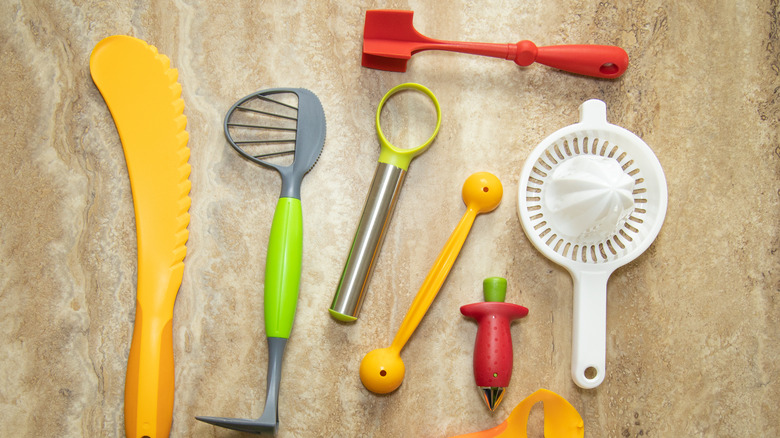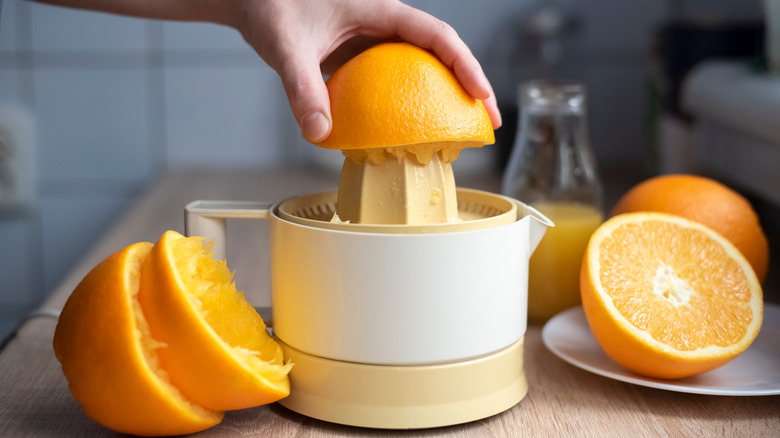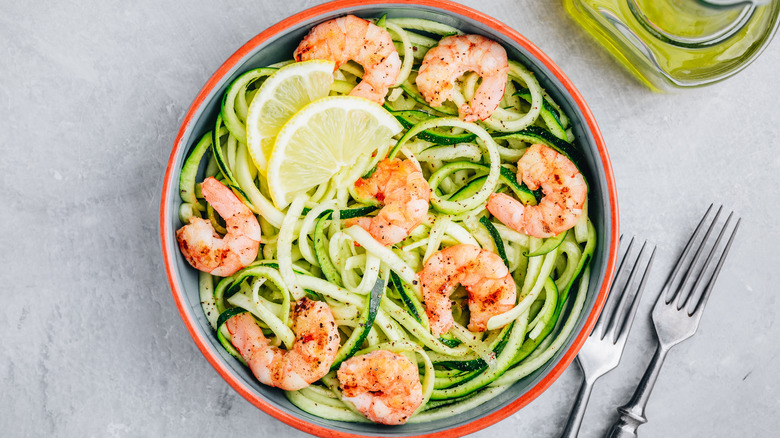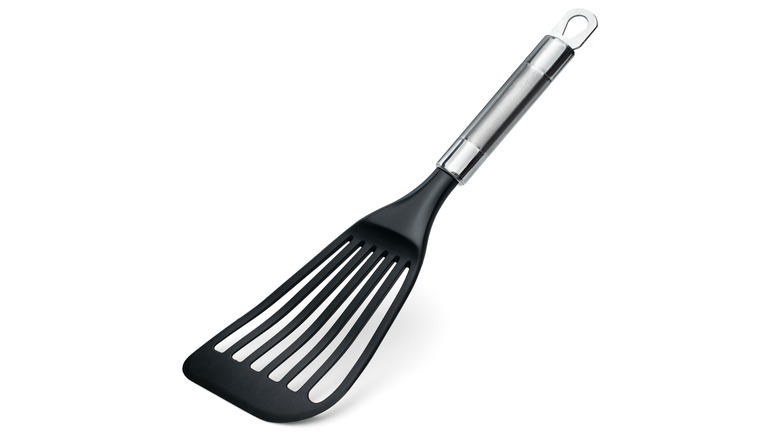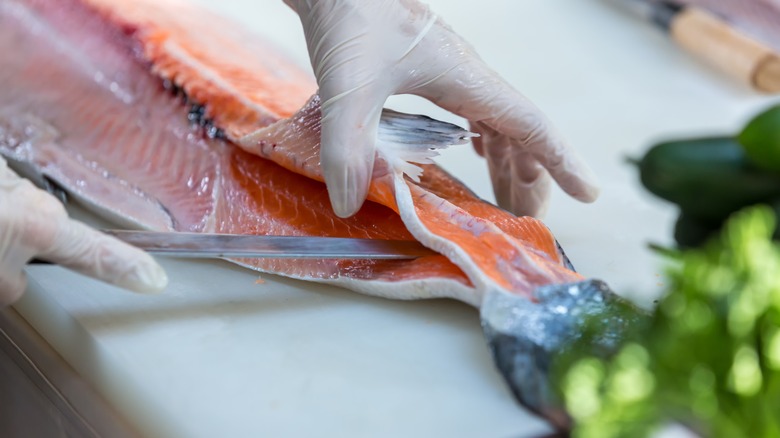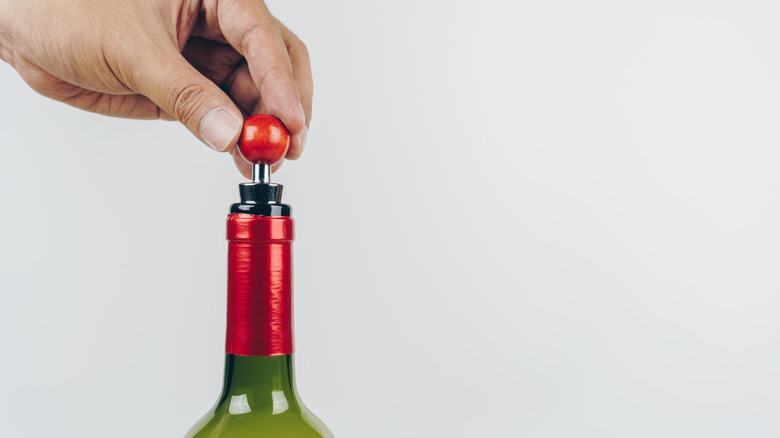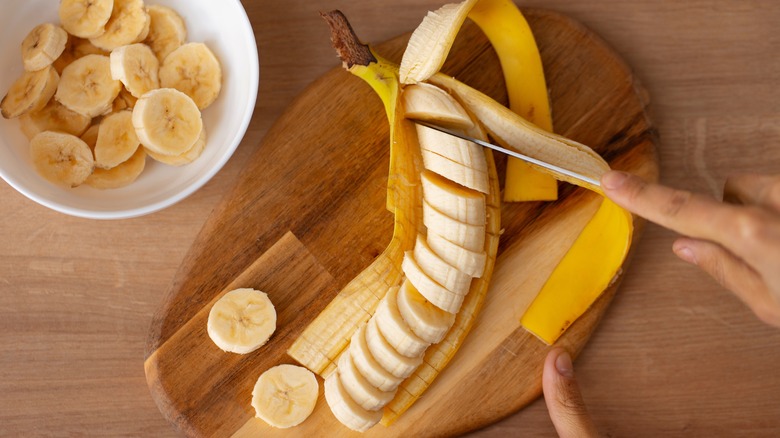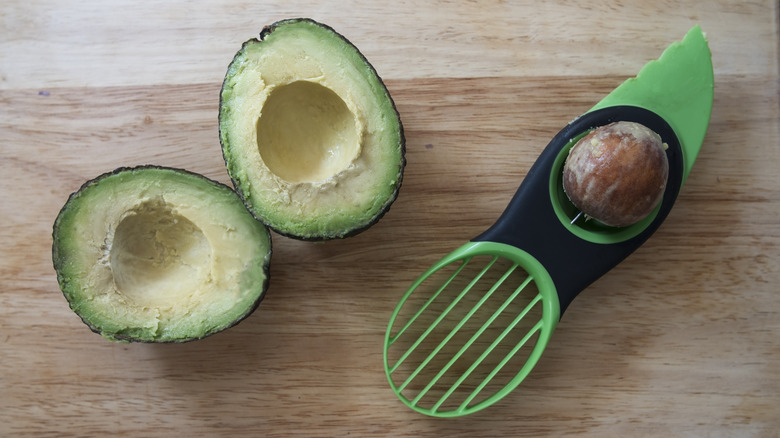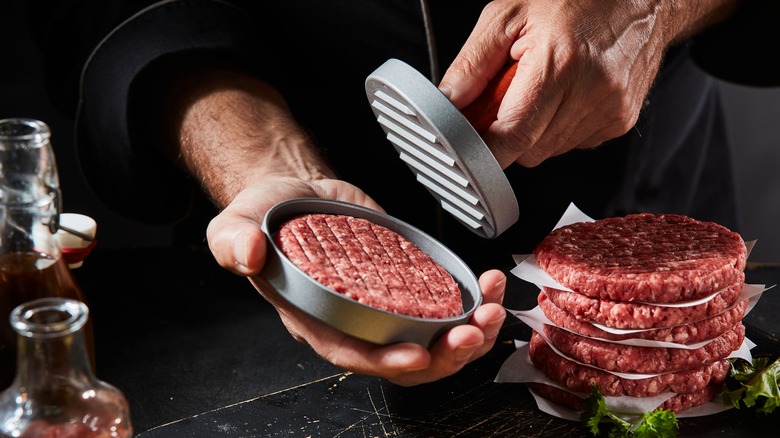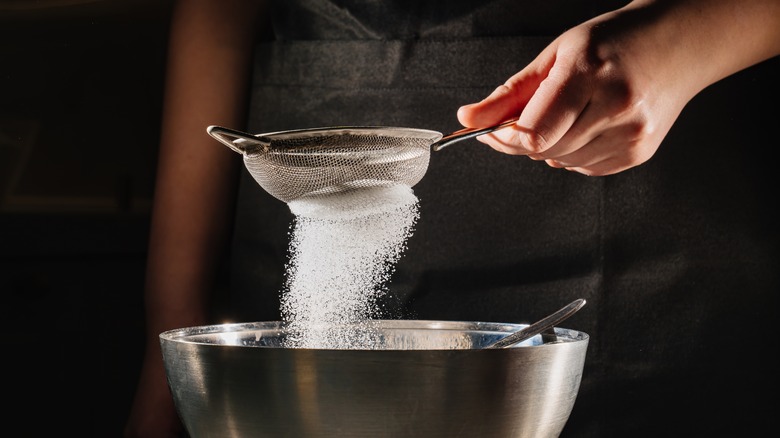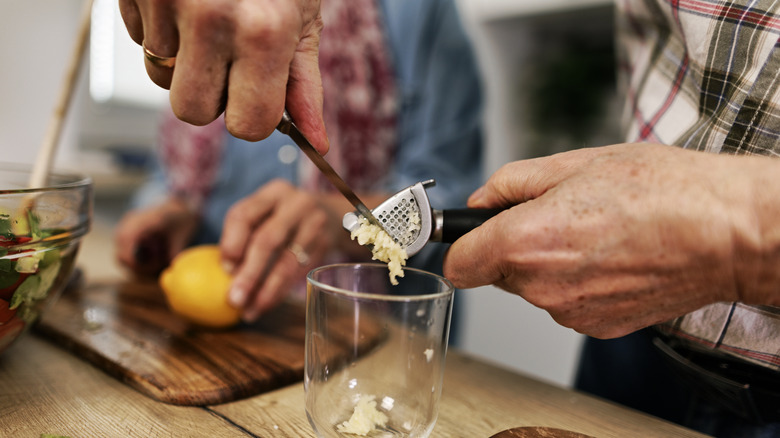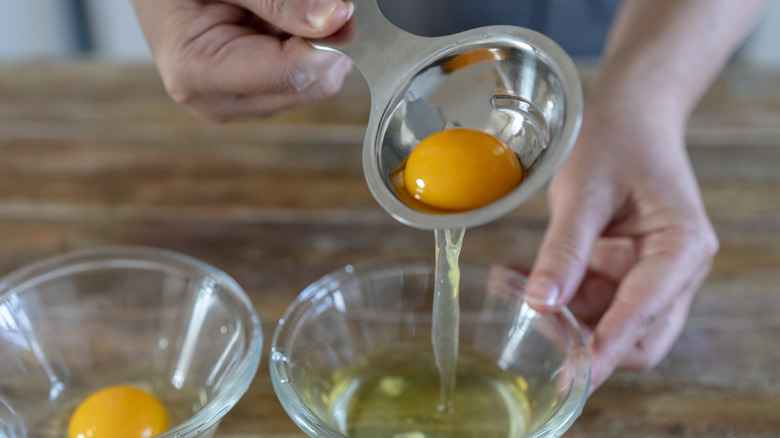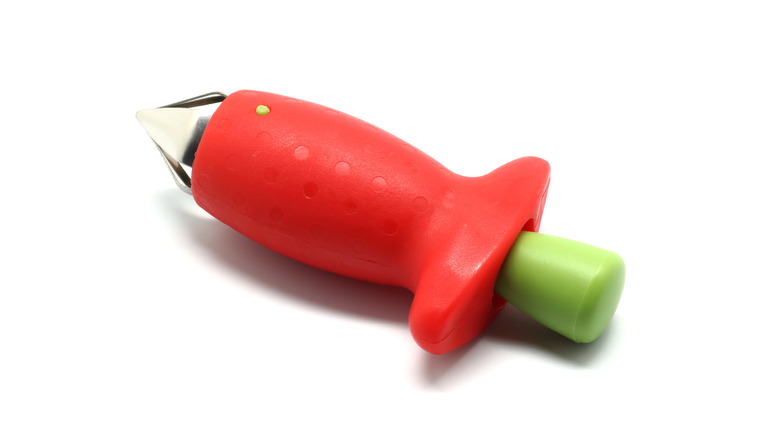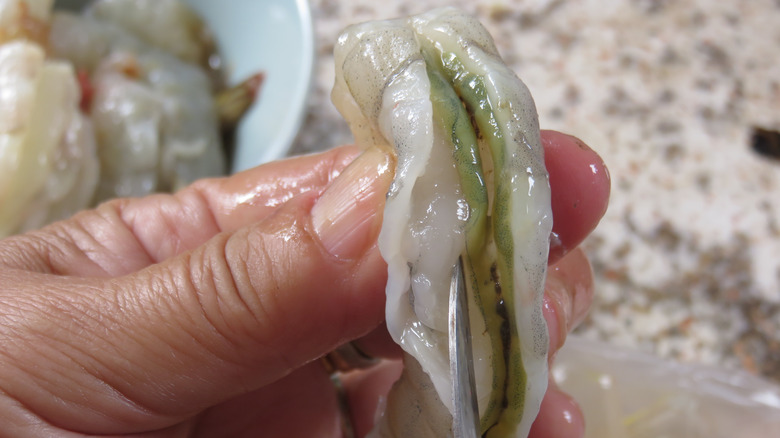The Most Useless Cooking Utensils, According To Chefs
When you're strolling the aisles of your favorite kitchen supply store, you'll see many utensils marketed for various purposes such as juicing, dicing, slicing, or storage. Sometimes it seems the days of having just a few quality tools are gone, as the industry pushes buyers into owning a specific tool for each task in the kitchen.
When building your arsenal of kitchen tools, it's often hard to determine what items are total must-haves and what you could do without. Whether you're working with a small amount of storage space or simply prefer to be thoughtful about your spending, it can be helpful (and cost-effective) to be choosy about which items are worth it in the long run.
One tried and true way to optimize your budget and space is to eliminate kitchen utensils that only serve one purpose or are easily replaced by a tool that can perform multiple functions, like a quality kitchen knife. We've compiled a list of the most useless cooking utensils according to chefs, so you can save your time, money, and kitchen storage space.
Citrus juicer
Whether it's electric, mechanical, or hand-held, a citrus juicer might seem like a helpful kitchen must-have to up your cooking and bartending game. After all, the juice in tangy citrus fruits like oranges, lemons, and limes is precious nectar, and it can be hard to squeeze a lot of it by hand when needed. However, many chefs believe a juicer, large or small, can be a useless kitchen tool, especially if you're low on space.
Matt Moran, an Australian chef and restaurateur, told Good Food, "I know people love them but [...] by the time you get it out and put all the parts together, not to mention dismantling and cleaning it, it just seems to make more sense to me to do it the old fashioned way." Of course, Moran is likely referring to cutting citrus in half and squeezing by hand. If hand strength is an issue, opt for tongs to give you additional leverage when squeezing. Another option is to poke the inside of the citrus flesh with a fork with one hand and squeeze the rind with your other hand, giving you more control and grip.
Vegetable spiralizer
Vegetables like zucchini, sweet potato, and squash have become popular alternatives to traditional pasta for those seeking a healthier lifestyle or just looking to add more vegetables to their diet. In response to the craze of spiralized veggies in lieu of pasta, the kitchen tool industry has created a wide range of products to help turn firm vegetables into thin spirals. Whether you buy a special handheld spiralizer or a mechanical spiralizer attachment for your mixer, chefs believe home cooks would be better off saving their money (and kitchen space).
"I just think, if I want to eat zucchini, I'll eat zucchini," said chef Frank Camorra in an interview with Good Food. "I don't need it to be a particular stringy shape." In addition to simply eating vegetables in their natural shape, Camorra also suggests home cooks learn better knife skills to cut vegetables like squash into thin strips, also called julienne cuts.
Non heat-proof spatula
A simple walk down any kitchen supply aisle will reveal hundreds of options when it comes to spatulas. From plastic to metal to silicone, there are many materials to choose from, and most spatulas come in a wide range of sizes. Although the specific kind you need depends heavily on the type of cooking you do, any spatula you purchase should be heat-proof.
Plastic spatulas are most commonly sold, but they are quick to melt if exposed to temperatures that are too high. So although they're inexpensive, they likely won't last long in a household that cooks a lot. A melted plastic spatula can quickly ruin your food, so cooks should generally opt for silicone, which is more resistant.
Some chefs are partial to fish spatulas made of flexible metal because they're extremely versatile, long-lasting, and of course, totally heat-proof. But buyer beware: Metal can scratch your pans if you're not careful. You'll want to know how to properly use a metal spatula before practicing on your most expensive cookware.
Task-specific knives
In an effort to sell aspiring chefs and home cooks more kitchen tools, there seems to be a specialty knife available for nearly every step of the cooking process, every type of protein, and every vegetable. In addition, many knife sets are sold with a dozen or so different knives, so it's no wonder that many gift givers and home shoppers think this is the amount of cutlery required to make a chef-style meal.
However, having many different knives, particularly those marketed for specific tasks or specialty purposes, just isn't necessary to achieve restaurant-quality meals, according to professional chefs. "A sharp knife and simple understanding of the anatomy of the fruit and vegetable are all you need," according to chef Yvan Lemoine when speaking to Domino about specialty knives and slicing tools. In fact, Lemoine says home cooks are more likely to hurt themselves with specialty slicers than to get the result they're looking for.
Decorative wine stopper
If you're a wine drinker, you've likely been gifted (or purchased) your fair share of decorative wine stoppers. These rubber-ended stoppers are often crowned with decorative elements like figurines, shapes, and crystals to make your leftover bottle of wine look a little more fun on your bar or countertop.
In addition to being marketed as a great souvenir or a unique decorative element to add to any home, decorative wine stoppers are also sold as a way to postpone the shelf-life of open wine. Stoppers are meant to seal the opening of the bottle, keeping air out of your wine. Though this is a good idea, professionals know that there is actually little value to decorative wine stoppers beyond their looks.
Alon Langleib, the culinary director of a bar and restaurant in New Jersey, told Real Simple that decorative wine corks do not do a better job of sealing wine than the cork that bottles come sealed with. So, next time you're tempted to buy a decorative wine stopper, remember that the bottle already comes with one for free.
Banana slicer
Stores and online purveyors are quick to come up with unique, single-use items to sell to cooking enthusiasts. One that particularly caught the internet's attention was a banana slicer sold on Amazon. Shaped like a banana, the tool has multiple metal slicers to quickly and easily cut a banana into even slices in one swift motion. With thousands of positive (and hilarious) reviews, it may seem like a good investment, especially considering the price tag is under $5.
However, most professional chefs agree that a banana slicer is a useless purchase. This makes sense considering many think that any kitchen utensil which serves only one niche purpose is a waste of money and space in your kitchen drawers and cabinets. Even if you slice a banana every single day, you'd save space by just using a knife. Even the dullest of knives is sure to tackle this mushy and easy-to-cut fruit.
Avocado slicer
If you've never sliced into an avocado it can be a little daunting at first, but once you figure it out it's a simple and easy kitchen task. Despite this, many kitchen utensil providers have taken it upon themselves to sell specialty avocado slicers. These gadgets have three key elements: one sharp end to cut into the avocado's skin, a pitter to remove the avocado's pit, and a fan blade end to slice the avocado into even slices.
If you're looking to add a dose of healthy fats to your diet, avocado is a great way to do so, however, don't spring for a 3-in-1 avocado-slicing tool just yet. Chef Manny Arce of Poquitos in Seattle believes this tool is completely useless if you own a good knife. In addition to getting the job done just as well as a specialty utensil that takes up space in your kitchen, a sharp knife will probably get it done faster.
Hamburger press
While we're discussing single-use kitchen utensils, a hamburger press is totally unnecessary, according to Chef Maro Gjurasic. The purpose of a hamburger press tool is to press the raw meat and form it into a patty shape. Some grillers also use specialty heat-proof hamburger presses to add pressure to the meat while it's on the griddle so it gets a solid sear.
If you're looking to save some money on a meat-shaping tool, Gjurasic has a hack that works with items you've likely already got in your kitchen. Line the lid of a large jar with plastic wrap and place the ground meat into the lid to shape it into a patty. Then, remove the plastic wrap along with the meat and enjoy your perfectly shaped burger patty. Meanwhile, for home chefs looking for a burger press to use on the griddle, consider using a small cast iron skillet or pan instead.
Sifter
They say that baking is a science, and if you have ever gone on a baking journey, you know that it can also be expensive. Many baking tools are necessary to make baking easier, faster, and more successful. For example, any aspiring baker would be smart to invest in a quality mixer, measuring cups, measuring spoons, and a kitchen scale. However, these tools can all become pricey, especially if you're starting from scratch. According to chefs who bake all of the time, if you're building your baking utensil collection, there are some tools — like a sifter — you can skip.
Gracie Bensimon, a professional baker and owner of Gracie Baked, believes that a sifter isn't really that much faster. She acknowledges that it is important to mix dry baking ingredients together properly to get rid of potential lumps and ensure the baked goods turn out light and fluffy. However, she believes this can be accomplished just as easily with a whisk as opposed to a sifter.
Garlic press
Garlic is a savory and distinct ingredient that is included in nearly every recipe. Home cooks can struggle with peeling and mincing it because of the small size of the cloves, but it's an essential skill to acquire for anyone learning to cook. A garlic press is specifically designed to solve this problem. The metal tool has small openings that the clove squeezes through, creating instant minced garlic.
Although effective, chefs feel this is a useless tool for anyone who knows how to properly mince with a sharp knife. Chef John Stage doesn't know any professional chef who uses a garlic press. You too can dismiss this tool by learning proper mincing techniques. If you're looking for other ways to easily add garlic to a recipe without a press, try grating the cloves on a cheese grater or zester or smashing them with the side of your knife.
Egg separator
Many recipes, from pastries to savory dishes, require you to separate an egg to use the yolk or the white on its own. Yolks can be used as a thickener, such as when making fruit curds. Meanwhile, whites can lighten things up to help ingredients become fluffy or airy, like when making meringue. Egg separators are designed to separate the yolks from the whites, but these tools serve no other purpose, and many chefs believe they are not worth buying.
In lieu of buying an egg separator, professional chefs say it's easier to use your (clean!) hands. Crack the egg and let it slide into your hand, using your fingers as a sieve to let the whites run through into a bowl and leave the yolk behind. Then, simply transfer the yolk into a separate bowl. Another option is to use the eggshell itself. Crack the egg and hold it upright as you open the shell. Gently pass the egg from one half of the shell to the other until the yolk separates from the white. It's easy and free!
Strawberry huller
Strawberries are a delicious summer fruit that is perfect for snacking, adding to healthy smoothies, and mixing into fresh fruit salads. The only annoying aspect of working with the berries in a recipe is cutting off the leafy tops in order to be able to enjoy them.
The strawberry huller is another one-use kitchen tool that, although seemingly helpful in making strawberry topping easier, is ultimately useless if you have a knife. Most food professionals don't use one at all and don't recommend home cooks buy one out of need. Instead, a simple paring knife will do the trick. If you don't have a paring knife handy, you can use a small teaspoon to scoop out the hull in a pinch. Another popular hack to remove the tops of strawberries is to push a straw through the bottom of the berry and keep pushing until the top comes off.
Shrimp deveiner
Deveining shrimp involves removing the shrimp's digestive tract, which is a task that anyone who cooks with shrimp will attest can be frustrating and time-consuming, particularly if you don't have much practice. To try and make the process easier for inexperienced home chefs, kitchen utensil companies have created specific tools to devein shrimp. The gadgets like the deveiners sold on Amazon often claim to be 3-in-1, helping cooks peel, butterfly, and devein all in one step.
However, according to professionals, the task can be easily completed with a paring knife. Simply use the knife to cut a shallow slice down the back of the shrimp. Then run the knife below the black vein and remove the digestive tract. Be sure to work carefully to avoid cutting yourself in the process. Without spending money on a single-use kitchen tool, you've successfully deveined fresh shrimp and learned a new skill.
